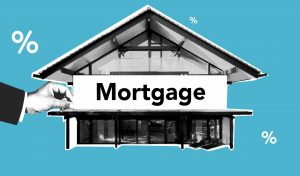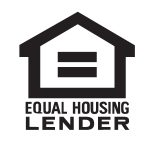No matter whether you are refinancing an existing mortgage or buying a home for the first home, you just cannot ignore the closing cost. One has to pay the closing cost in order to lock the deal and complete real estate transaction. If closing cost is stopping you from getting refinanced, then no closing cost refinance mortgage offers the best solution.
Many homeowners are unaware that refinancing without closing costs is a viable option for them. In this article, we will explore the numerous benefits as well as potential drawbacks of a no-closing cost refinance.
We will also look at how no-closing cost refinances can enable you to pay off your mortgage more quickly, reduce your monthly payments and even consolidate debt.
This article is a must-read to have a better understanding of no closing cost refinance. So, you can make an informed decision as to whether or not it is right for you.
Let’s begin!
What is a No Closing Cost Refinance?
Basically, No closing cost refinance is a kind of home loan refinance where you don’t need to pay any closing cost. It’s done by refinancing their existing mortgage. This option can be a great way to save money on the overall cost of the refinance, as closing costs can quickly add up and be a major expense. In such loan types, it’s the lender who bears the closing costs rather than the borrower.
This type of refinance involves the homeowner paying the closing costs upfront, rather than paying them in the form of interest over the life of the loan.
But keep in mind that this type of loan is typically offered by lenders in exchange for a higher interest rate as compared to traditional refinance loans.
How much does it cost to Refinance A Mortgage?
Usually, the additional cost to refinance a mortgage is 2 to 6% of your original loan amount. Here is the list of some expenses that you need to pay while refinancing:
Loan origination fees
In order to process the loan, the borrower needs to pay the loan origination fee of 0.5% – 1% to the lender. It comprises of:
- Underwriting
- Application fees, and
- other administrative fees.
VA funding fee
It’s the cost that a borrower should pay to the veteran affairs department in case you have chosen VA loan refinancing. Check how much you need to pay:
- The VA funding fee for first-timers with refinancing via different types of loans can be a maximum of 2.3% of your new loan.
- In case you have already taken a VA loan in the past, the VA funding fee is 3.6% of the loan amount.
- Also, the VA funding fee is 0.5% for the borrowers with VA Streamline refinance, also referred to as VA Interest Rate Reduction Refinance Loan (IRRRL).
Appraisal fees
These can vary (from $300 – $500) depending on the total units, square footage, and distance that the appraiser travels to determine your property value and loan-to-value (LTV) ratio.
Title insurance
The borrower needs to buy the title insurance policy to avoid any kind of errors in legal property papers or closing documents. Many reputed title insurance companies provide huge discounts for their existing customers.
Mortgage Insurance
If you have opted to refinance Federal Housing Administration (FHA) loans, then you need to pay an upfront mortgage insurance premium (MIP) of 1.75% of your new loan amount.
Whereas Conventional loan types offer lower interest rates with single-pay mortgage insurance which means you don’t need to pay higher interest rates or private mortgage insurance (PMI) each month
Credit Report Fee
To check your financial status or any unpaid loans, some lenders may charge you a credit report fee to evaluate your credit score. It’ll cost you around $25 – $50 and can vary depending on your loan type, lender, and location.
Discount Points
Such points are also called mortgage points or prepaid interest and cost 1% of your new loan. Discount points have the potential to lower the interest rate but it’s completely optional. Whether or not you should invest in discount points depends on your monthly mortgage payment.
Besides this, a borrower may also need to pay Recording fees, Attorney fees, and others as suggested by your lender.
Benefits of a No Closing Cost Refinance
Save Money
One of the most obvious benefits of a no-closing cost refinance is the potential to save hundreds, or even thousands, of dollars on the final cost of the loan. Without the need to pay closing costs, more of the loan can be used to pay off the principal balance.
Minimize Fees
When you refinance a loan, there may be fees associated with the loan or its closing costs. A no-closing-cost refinance eliminates or minimizes such fees, allowing you to avoid having to pay additional fees on top of the loan.
Lower monthly payments
A no-closing cost refinance typically has lower monthly payments, which can help a homeowner budget and save money. With lower monthly payments, you can potentially reduce your overall debt and improve your financial situation.
Lower interest rates
Because lenders don’t have to recoup the cost of closing when a no-closing cost refinance is chosen, interest rates may be lower than with a traditional refinance or home equity loan.
Improved Cash Flow
With a no-closing cost refinance, you can potentially improve your cash flow. Since the loan does not require you to pay any closing costs upfront, it allows you to spread the cost of the loan out over the life of the loan.
Flexibility
Refinancing with no closing costs allows you to choose your loan term and the amount you will be paying each month.
How to Qualify for a No Closing Cost Refinance?
The qualifications for a no-closing cost refinance vary depending on the lender and the type of loan (FHA/ VA, etc.) that is being applied for. Check below the few requirements that you need to meet to get eligible for this loan type:
- You must meet the lender’s credit requirements. Generally, lenders will require you to have a minimum credit score and a good debt-to-income ratio (DTI). Your DTI should usually be no higher than 43%.
- You must be refinancing into a loan with a lower rate than your current mortgage. This is usually only available for shorter loans, such as 15-year mortgages.
- Check if you can pay points. While you’ll be saving on closing costs, you’ll need to pay for a certain amount of points when you refinance. These points are often tax-deductible, so it’s a great way to save some extra money.
- Finally, the lender should consider you to be a lower risk. Typically, this means you have a good job history and sufficient income to cover the payment.
Most lenders also require that the borrower has been in the same home for at least 12 months before applying for the refinance. Congratulations, if you can meet the above-said criteria! But, Make sure to shop around and compare rates to get the best deal on your no-closing Cost Refinance.
Documents Needed to Apply for a No Closing Cost Refinance
To apply for a no-closing cost refinance, you will need to provide certain documents to your lender. These documents will help the lender assess your creditworthiness, debt-to-income ratio, and other factors that affect the loan. The specific documents you will need to provide will vary depending on the lender, but typically include:
- Application documents – These documents request basic information about you, including your name, address, income, employment history, and Social Security number.
- Financial documents – You will need to provide documentation of your current financial situation, such as your pay stubs as well as recent bank statements, tax returns, and proof of assets and liabilities.
- Refinancing documents – Your lender will need to review any documents related to the mortgage or other loans you’re refinancing. This includes information about the property you’re refinancing, the existing loan, and its terms.
- Property appraisal – Most lenders will require an appraisal of the property in order to get a better understanding of its value and to determine that it meets its requirements.
- Insurance documents – You will need to provide proof of insurance for refinancing your loan type.
Frequently Asked Questions
When is a no-closing-cost refinancing of a house appropriate?
It’s by far the best option for buyers who don’t want to pay closing costs and are planning to live in the house for less than five years. It allows them to re-sell the home without having to pay high-interest rates.
When does a refinancing with no closing costs not work?
For buyers who are planning to make their present home a forever home, no closing cost refinance is probably not a good idea.
Conclusion:
A no-closing cost refinance can be a great option for those looking to save money on their mortgage. It can help reduce upfront costs and make your monthly payments more manageable. Plus, you don’t have to worry about tying up a lot of cash in your refinance transaction. As always, it’s important to discuss with a qualified financial professional and shop around for the best rate and terms for your individual needs.





